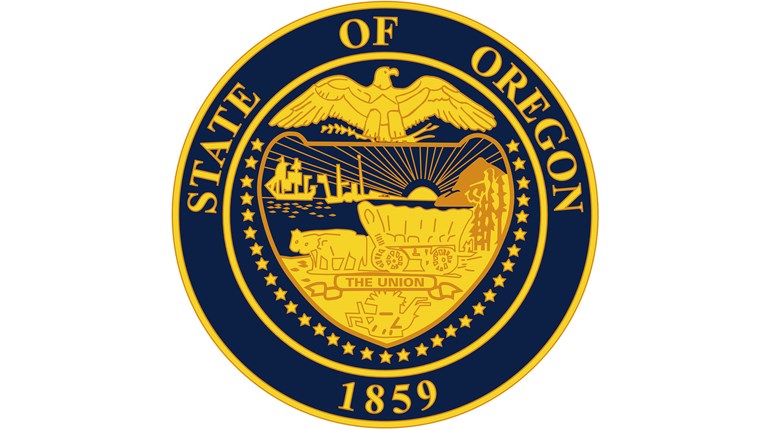
As the actor John Ratzenberger tells it, when he auditioned for the hit 1980s sitcom Cheers—a show that centered on a group of Boston pub goers—he was being considered for the role of “Norm,” the bar’s sage. Ratzenberger was wise enough to know that part didn’t fit him (it would be won by George Wendt), so he asked if they had cast a bar know-it-all. The producers said they hadn’t. And so, soon Ratzenberger was cast as “Cliff Clavin,” the guy in the bar who knew just enough about everything to get himself humorously in over his head all the time.
Such is how America has long viewed “experts.”
The trouble for today’s gun-control experts is they are often Cliff Clavins, but they think they can get away with it—even in the courtroom.
What I See in Court
In my day job, I teach history at a college in Idaho, but I am often hired as a researcher or an expert witness to challenge or counter gun-control “experts.” As a result, it is normal for me to confront the ignorance and outright bias of the gun-control crowd.
To make the point clear, let’s start with an example that made national headlines.
In 1996, while working on my master’s thesis, I read a paper by Michael A. Bellesiles on early gun laws, published in The Journal of American History. This paper formed the basis for Bellesiles’ later book, Arming America. My thesis examined the development of concealed-weapon laws in the early Republic, and I was struck by how Bellesiles’ paper contradicted my own knowledge of gun availability in the colonies and early America; however, at the time, I thought Bellesiles must have found some sources to back his claims. After all, papers in academic journals are supposed to be peer reviewed.
I was later sent an early review copy of Arming America: The Origins of a National Gun Culture. Upon reading it, I immediately saw significant discrepancies with what I knew of American history, particularly around the time of the American Revolution. I began checking facts and discovered that many of Bellesiles’ citations and quotes did not match the historical record. I sat down with a list of the bizarre and amazing claims Bellesiles had made and started chasing down the citations at Sonoma State University’s library. I soon found quotations, used out of context, that completely reversed the author’s argument. I found dates changed. I found the text of statutes changed—and the changes completely reversed the meaning of the law.
I began to publicly talk about these problems. This brought resistance from some in the media and from academia.
In 2001, for example, a review from Roger Lane in The Journal of American History said that the book’s research was “meticulous and thorough.” Lane wrote that Bellesiles had “attacked the central myth behind the National Rifle Association’s interpretation of the Second Amendment.” Lane declared Bellesiles’ evidence so formidable that “if the subject were open to rational argument,” the debate would be over.
The thing is, Bellesiles’ fabrication was so blatant that other historians soon began to find what I did. On Dec. 13, 2002, Bellesiles’ Bancroft Prize was revoked by the Columbia University Board of Trustees. Bellesiles would also lose his teaching position.
At the time, I argued that the reason why historians swallowed Arming America’s preposterous claims so readily was that its narrative fit into their political worldview so well. Arming America created a system of thought so comfortable for the vast majority of historians that they didn’t even pause to consider the possibility that something wasn’t right.
After the deceit became too clear to ignore, the historian Garry Wills, who had positively reviewed Arming America for The New York Times, said in a 2005 interview on C-SPAN: “I was took. The book is a fraud.”
Tellingly, the gun-control promoting researchers and so-called historians have not learned the obvious lesson from this fakery.
 Today’s Gun-Control “Experts”
Today’s Gun-Control “Experts”
The U.S. Supreme Court’s New York State Rifle & Pistol Association v. Bruen (2022) decision requires the Second Amendment to be interpreted based on the historical tradition of arms ownership. A few states have responded to this much-needed historical check like some states had responded to the 1954 Supreme Court ruling against the segregation of public schools. In sum, the segregated states wrote new laws in the hopes of evading the ban. Just like those segregationists, the state officials who want more gun-control laws have been writing new legislation to try to get around the Bruen decision.
Meanwhile, pro-freedom groups and others have used the Bruen decision to challenge many of these new laws, usually in federal courts. These lawsuits have created a demand for expert witnesses from both sides.
Expert witnesses testify about various facts relevant to the case before the court. On the side of the gun-control proponents, these experts are often paid by the federal, state or local governments. On the side of freedom, these expert witnesses are usually paid by people who are injured by these new laws or by Second Amendment-supporting organizations. The government experts often get paid very well, as government resources are taxpayer deep.
When the freedom side challenged Hawaii’s large-capacity pistol magazine ban, for example, the state paid professor Saul Cornell “at an hourly rate of $750 for reviewing materials, writing, research, participating in meetings and preparing reports; $1,000 per hour for depositions and court appearances; and an additional $500 per day for travel time.” This, again, is taxpayer money.
So just what are these experts swearing to under oath? For most of them, they make claims about history. What I’ve heard them say would be comical if federal judges did not take them so seriously. One of the more ridiculous examples is from a deposition (which is a sworn statement made before a trial) of Brennan N. Rivas, Ph.D., in the Oregon Measure 114 case:
Q. Do you think keeping records of gun sales makes folks safer?
A. I do think that’s a good idea. It’s a—it would seem, especially after watching a lot of Law & Order, that, you know, it’s probably very helpful in terms of tracking down where guns came from to keep track of sales records like that.
Be glad she did not have to make an expert declaration about objects seen in the skies. Star Trek might have been her source.
Other examples are not so amusing. Again, Dr. Rivas in Siegel v. Platkin, defended New Jersey’s new and very broad ban on where concealed-carry licensees can carry, by saying, “This tradition was absorbed into American law, where numerous colonies and states enacted similar measures that forbade someone to ‘go or ride’ armed in public spaces. An early example provided that individuals shall neither ‘go nor ride armed by night nor by day, in fair or markets, or in other places, in terror of the Country, upon pain of being arrested and committed to prison.’”
Her footnote for that last quote claims it comes from “1786 Va. Laws 33, ch. 21, An Act forbidding and punishing Affrays (Ex. D).” She has an Exhibit D that contains laws passed by various states, but not “1786 Va. Laws 33, ch. 21.” This is what “1786 Va. Laws ch. 21” actually says: “CHAP. 21: An act for giving further time to officers, soldiers, sailors, and marines, to settle their arrears of pay and depreciation, with the auditor of public accounts.” She doesn’t have it for a very simple reason: There is no such law by that description.
There is a somewhat similar law to what Rivas cites under the citation “1786 Va. 334, ch. 49.” So how did Rivas get this wrong? It turns out the Duke University Law School’s Repository of Historical Gun Laws has this incorrect citation, and Rivas appears not to have bothered looking up the law before quoting the Repository.
Professor Robert J. Spitzer’s expert declaration in Delaware Sportsmen’s Foundation v. Delaware Dept. of Safety and Homeland Security (D.Del. 2023) used the same incorrect citation. (I have previously written about this same sloppy work by the California attorney general’s office. See the June/July 2020 issue of America’s 1st Freedom.)
Several of the expert declarations submitted in these cases contain “Exhibits B and C,” in which the Exhibit B is a list of “Dangerous Weapons Restrictions” by state, year and category of weapon. Exhibit C contains the laws referenced in Exhibit B sorted by state. These two exhibits are identical in multiple cases that involve challenges to different laws. Some of these cases are bans on possession of weapons (even in your own home), and some are limitations on concealed carry. It seems to me to be rather subpar to use the same all-encompassing list of laws for very different challenges.
The assumption seems to have been that the reader will see that a law is listed in Exhibit B and assume that the law listed in Exhibit C is what Exhibit B claims that it is. There are a lot of problems with these citations; for example, in Spitzer’s declaration for California’s baton ban, he neglects to mention that many of the laws in Exhibits B and C that banned possession of clubs or batons applied only to slaves, free blacks and sometimes minors. Some of these laws that Spitzer represents as banning the carrying of clubs only criminalize being armed while rioting. So these exhibits are misleading, at best. But they are produced by experts; why would you check to see if they say what the expert claims they say?
Some of the expert declarations are painful to read. In Rupp v. Bonta, which challenged California’s ban on so-called “assault weapons,” I submitted a declaration about the unfortunately long history of mass murder in America. Randolph Roth, a professor of history and sociology at Ohio State, decided to criticize my research. Now, Roth has studied the history of American murder with great care and makes many good points about why we are having the current crisis. Still, his response to my observation that guns are not required for mass murder was horrifying:
“But Cramer’s claim that axes, clubs, and knives can kill or wound are effective tools for committing mass murder is misleading … . The husband who attacked his family with an axe in Clarksburg, Virginia, in 1805 killed only one adult, his wife. His other eight victims were his children. And the husband who attacked his family with a knife in Hallowell, Maine, in 1806 killed only one adult, his wife. His other 7 victims were his children. Cramer’s evidence does not show that edged and blunt weapons are effective tools for committing mass murder. It shows instead that infants and children are not capable of defending themselves against attacks by adults. That conclusion is consistent with the extensive literature in contemporary criminology that shows that young children are killed in the overwhelming majority of cases with weapons other than firearms, because adults can kill children so easily with physical force or everyday household objects.” [emphasis added]
So, Roth, rather than admit that mass murder can be done with other weapons, simply rejects that children should not be included in the definition of mass-murder victims? This is a not-so-subtle way for Roth to dodge the truth.
I can go on with examples, but you get the point. The gun-control proponents' so-called “expert witnesses” are often embarrassingly incompetent partisans. They cite laws that do not exist; they misrepresent laws that did exist; and they intentionally use semantics and cherry-pick parts of laws that were explicitly racist in order to find justifications for current laws.
And, if you are a taxpayer in one of the gun-control-pushing states that are still resisting Bruen, you are paying for this overpriced misinformation.


































